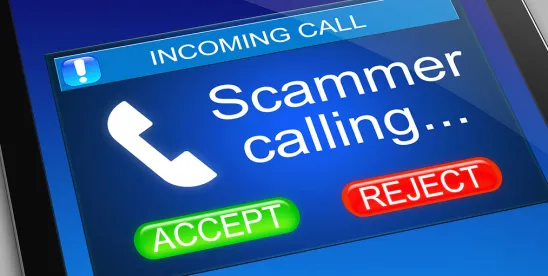So back in late 2019 and early 2020 Snap Financial was allegedly busily sending prerecorded robocalls to some lady’s cell phone, apparently in an effort to collect a debt owed by a customer.
But–stop me if you’ve heard this one before–the cell phone SF was calling did not belong to its customer, but to some random lady. Apparently, SF acknowledged it was calling the wrong person, but went ahead and called the number at least one more time just for good measure. And then it sent a text message because thoughtful.
So the lady–now the Plaintiff–goes ahead and sues Snap Financial in a TCPA class action. The case runs its course with defendant, apparently, producing a bunch of data–never a good idea folks–and we get to the big moment where the Plaintiff moves for certification.
Here’s the proposed class:
All persons throughout the United States (1) to whom Snap Finance LLC placed, or caused to be placed, a call, (2) directed to a number assigned to a cellular telephone service, but not assigned to a current or former Snap Finance LLC accountholder, (3) in connection with which Snap Finance LLC used an artificial or prerecorded voice, (4) from February 27, 2016 through the date of class certification.
Wesley estimates this class could consist of up to 82,780 members.
82,780!
That means if each class member received only one call–and I’m sure that isn’t the case–minimum damages here are over $41MM. (In the end the Court limited the class to later timeframes and only about 30k people ended up in the class so this is only about a $15MM (minimum) problem at the moment.)
Now notice this class should never be certifiable because the mere fact that a cell phone number is not assigned–whatever that means– to a current or former Snap Finance customer is not pertinent on the issue of consent. A regular user of a cell phone–even though not a subscriber–may consent and that consent is binding. So the class lacks commonality (nothing can be proven on the merits across the class by the membership criteria identified). So the case is uncertifiable.
But it looks like SF missed this argument–at least as the Court framed the issue. (Let me note that I have not gone back and looked at the opposition and courts will often time ignore or understate arguments so keep in mind I am looking only at what the Court considered, not necessarily what SF presented.)
Instead, SF argued: i) its own data on who is a wrong number is inaccurate; and ii) whether calls played is an individualized issue. Rather than address this in the framework of Rule 23(a), however, SF apparently raised commonality issues solely through the lens of predominance (Rule 23(b)(3).) If true, that’s…. an odd decision. And it allowed the court to leap what should have been an impossible hurdle in finding common issues to begin with.
On typicality, SF apparently argued that Plaintiff had not identified any other class members. But since a Plaintiff does not need to identify class members at the pleadings stage–which, BTW, is why class data should never be produced pre-certification–the court properly rejected that argument.
SF also argued that Plaintiff’s history in the collection space created an special defense around her standing to sue–since she knew how to make calls stop and didn’t, the argument goes, she lacks standing to sue. The Court rejected that argument as a matter of law–and substantively–and then proceeded to rule that Plaintiff was adequate to represent the class.
So on to predominance. As mentioned SF made two big arguments. And they were both rejected. First on the “did the message play?” front, Plaintiff’s counsel–the tirelessly successful Greenwald and Radbil–used SF’s data against it, again. First, they identified disposition codes that indicated a voicemail was identified. Then they looked at talk time–using 55 seconds and the magic mark–to determine that a voicemail was actually left for the consumer.
And while there is plainly a difference between SF playing a message to a VM in a vacant room, on the one hand, and a consumer actually receiving the VM–which is required to state a claim–, on the other, the Court bought it: “Wesley has sufficiently demonstrated that the issue of whether Snap called the putative class members, including whether a prerecorded voice message “actually played,” can be resolved with common evidence.”
That just leaves consent. Again, this issue should absolutely torch certification–no commonality to begin with–since lack of subscribership is not dispositive of the issue and regular users can also consent. I.e. the class as defined is not limited to wrong number calls.
Instead of focusing on the definitional issues, however, SF apparently posed only data arguments. And specifically, it argued that its own data was unreliable (always a risky gambit.) But, as the Court correctly pointed out, data issues are irrelevant–because the class is not defined based upon data, but upon certain facts unrelated to data. (Which, again, explains why class data need not and should not be produced prior to certification.) So arguments about data accuracy have nothing to do with merits of certification.
With SF’s best shot brushed aside the Court quickly determined the class actions is the superior vehicle to resolve the dispute and that the class is ascertainable using various reverse look-up methods.
So, yeah. Disaster.
I’ve said it a thousand times. TCPA class litigation is not for the green of horn or the faint of heart.
Here are some takeaways:
-
Do not produce class data pre-certification;
-
Remember that there is no reason to produce class data pre-certification;
-
Focus on class definitional issues and defeating commonality at the certification stage, not class data;
-
Don’t call wrong numbers;
-
Do not take a wrong number class action from Greenwald or Radbil lightly;
-
Remember that prerecorded calls are very troublesome;
-
Don’t send more calls and texts to a number after you know about wrong number report;
-
Do not produce class data pre-certification.
I know I can’t require it, but if you are a TCPA defendant facing a certification motion you should really think about having your counsel call me to discuss your response. I am always happy to help.




 />i
/>i

